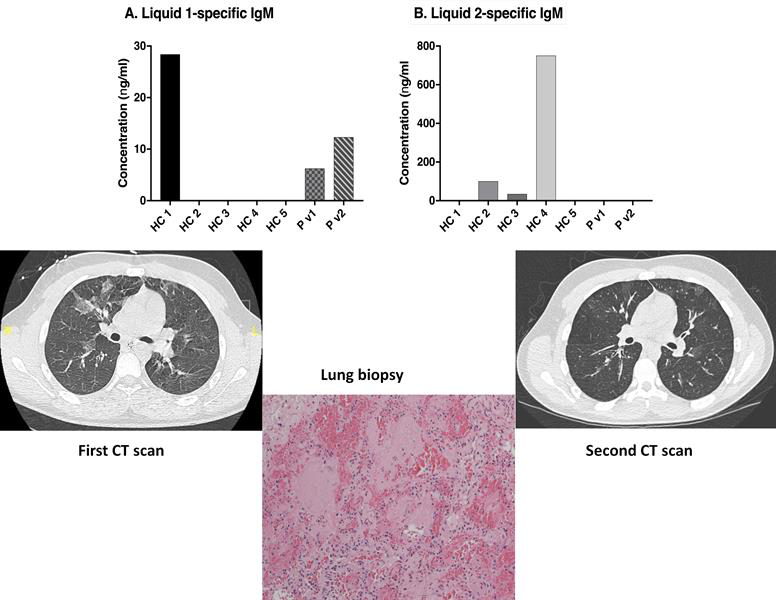By Philip Ward, AuntMinnie.com staff writer
November 14, 2019 — Fresh evidence has emerged of the health dangers of vaping. In a case report published by Archives of Disease in Childhood on November 11, U.K. authors warn that the fluid in electronic cigarettes (e-cigarettes) may cause life-threatening lung inflammation in those who are susceptible, after treating a teenage boy with respiratory failure.
Always consider a reaction to e-cigarettes in someone presenting with an atypical respiratory illness, and don’t think of e-cigarettes as being much safer than tobacco, noted Dr. Jayesh Mahendra Bhatt and colleagues from the department of pediatric respiratory medicine at Nottingham University Hospitals National Health Service (NHS) Trust.
The case of hypersensitivity pneumonitis in a 16-year-old boy was initially thought to be caused by worsening asthma, but the trigger for the condition is likely to have been an exaggerated immune response to one of the chemicals found in e-cigarette fluid, they explained.

The boy, who had not been diagnosed with asthma before, had experienced a fever, persistent cough, and increasing difficulty breathing throughout the previous week. Antibiotics and an asthma reliever inhaler had failed to alleviate the symptoms. Once he was admitted to the hospital, his condition deteriorated rapidly, and he developed respiratory failure, necessitating extracorporeal membrane oxygenation (ECMO) plus intravenous antibiotics and steroids.
Ten days later, the patient’s condition had become critical, and he developed severe myopathy as a result of his illness and steroid treatment, which required lengthy rehabilitation, the authors wrote.
During his recovery, he revealed he had recently started vaping and had been doing so fairly frequently, using two different types of e-cigarette liquid. The listed ingredients for both vaping liquids were the same, apart from the unnamed flavorings. He had smoked cannabis, he said, but not for a year, and he had not been in contact with farm animals or birds and had not recently traveled overseas — factors implicated in allergic respiratory reactions.
The patient’s CT lung scans and biopsy samples were consistent with hypersensitivity pneumonitis, and he was discharged 35 days after admission to the hospital, though still on steroids.
Nearly two months after he had first been admitted, he still showed symptoms. When the doctors tested his skin reactivity with a tiny amount of vaping fluid, he got worse, so they took blood samples and analyzed both vaping fluids to see if there were any possible chemical triggers. He seemed to have more antibodies to one of the two liquids, raising the possibility that this might have been the source of his reaction.
After 14 months, his symptoms cleared up, and the condition of his lungs returned to normal.
This is just one case, and it’s unclear exactly what triggered the boy’s condition, but there are two important lessons here, the authors concluded.
“The first is always to consider a reaction to e-cigarettes in someone presenting with an atypical respiratory illness,” they wrote. “The second is that we consider e-cigarettes as ‘much safer than tobacco’ at our peril.”
